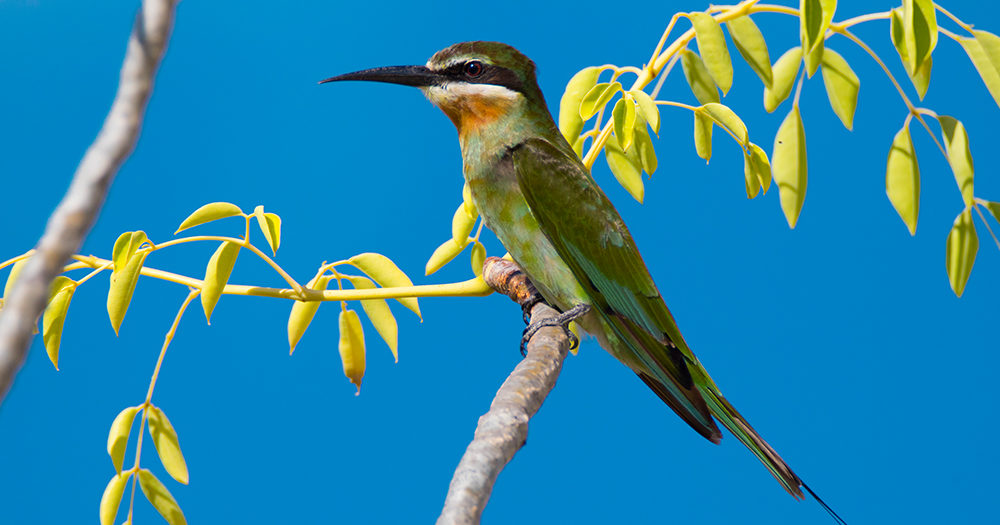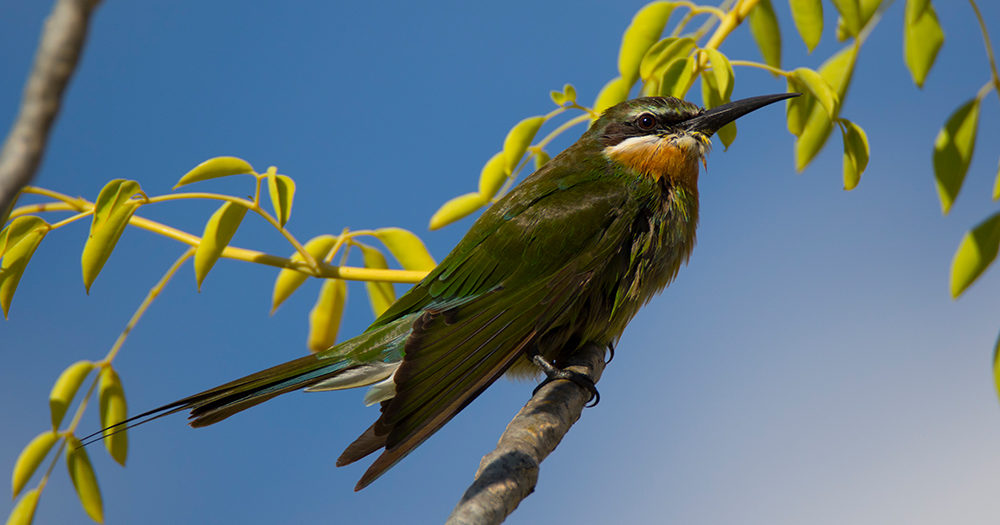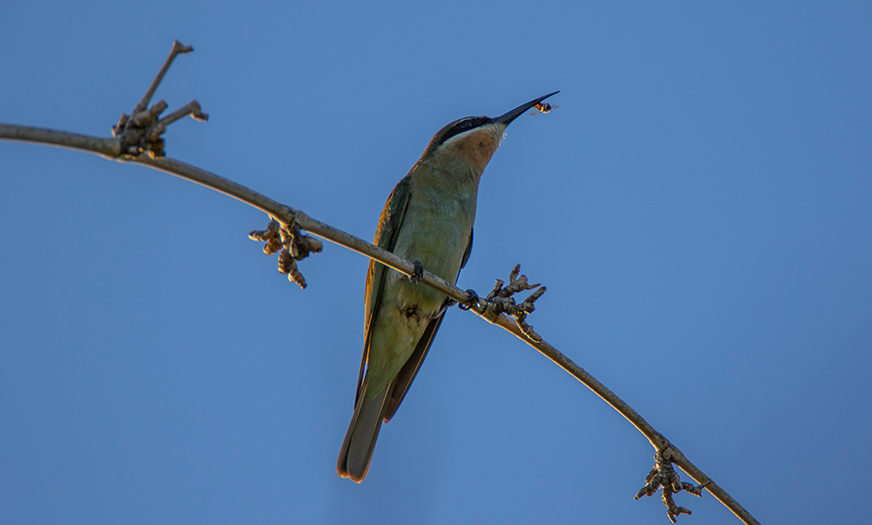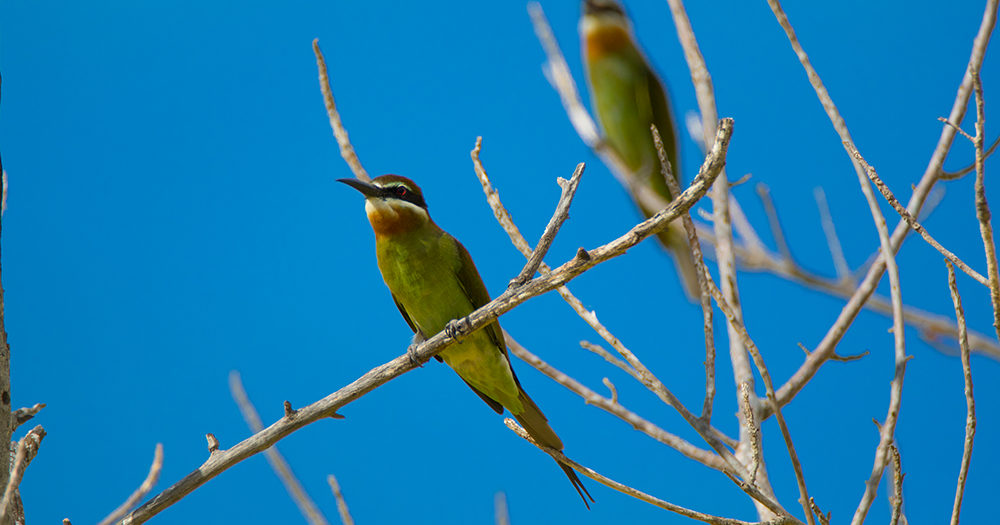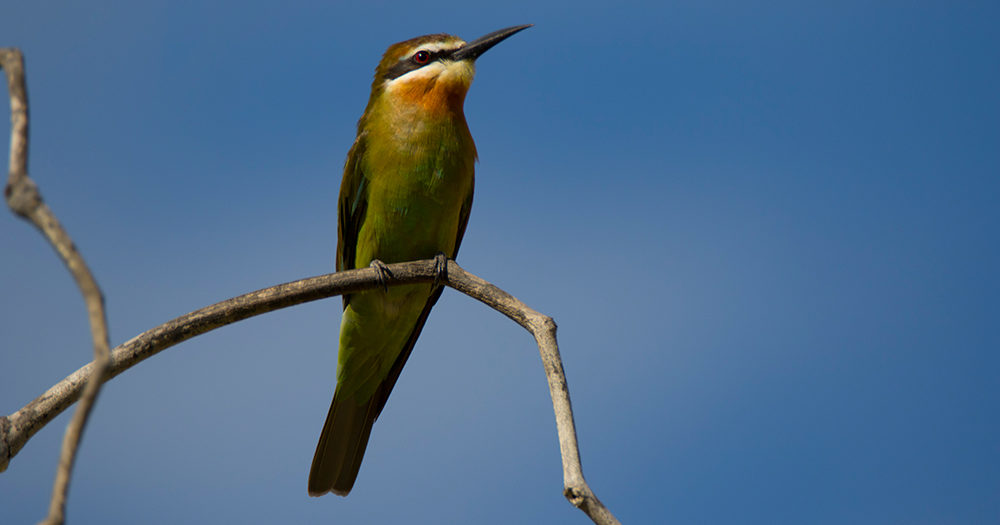Bee-eaters (Merops superciliosus) are among the most colourful birds in Madagascar. Here and there it is called olive bee-eater. Including its tail this small bird measures up to 30 cm in length, and it is not even 50 g heavy. It is not easy to differentiate males and females by colour: Both wear a splendid green plumage with a beige-reddish throat and black eye bandage.
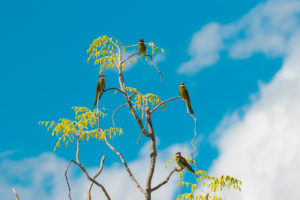
The bee-eater’s distribution covers wide parts of Africa. In Madagascar, subspecies Merops superciliosus superciliosus occurs. It also lives in Mozambique, Ethiopia, Kenya, Somalia and on the Comoros. The birds prefer coastal areas, at best with mangroves, or swampy landscape. But they may also be able to live close to rice fields – that is why bee-eaters get along well with increasing human settlement in Madagascar. Nevertheless they do not occur higher than 1500 m above sea level. In the past, scientists though that Madagascar bee-eaters migrate between summer and winter quarters like others of their family. Latest findings show that this is not the case: Madagascar’s bee-eaters stay on the island all year long.
As their name suggests, these birds mainly feed on bees and wasps, but also grasshoppers, dragonflies, termites, cicadas and butterflies. In brief: Flying insects are their profession. First they look for a perch, mostly the highest branches of a tree. From there they catch sight of possible prey that they skillfully catch during flight. They can reach considerable speed when flying. Back to their perch, they kill the prey, whereby poisonous prey such as wasps is rubbed over the branch to make it harmless before eating.
Bee-eaters are monogamous: Each year they get together in pairs, but nest together with up to 30 other pairs in a breeding colony. Real big colonies can grow to one hundred pairs of bee-eaters. They built their nests in moans and clay banks with a tunnel-like entry. At the beginning of the rainy season, from September on, the female lays two or three eggs. Both parents brood diligently until the first young hatch after only 19 days. The last will become fully fledged in December, which is an enormously short period of time for bee-eaters that keep their young more as double as long in their nests in other parts of the world. But in Madagascar, everything is a little different. Then a new generation of bee-eaters starts to discover the big island – and maybe they will later raise their own offspring.
- Calls of Madagascar bee-eaters on xeno-canto.org
- Pictures and videos in The Internet Bird Collection
 MADAMAGAZINE Your Magazine about Madagascar
MADAMAGAZINE Your Magazine about Madagascar
